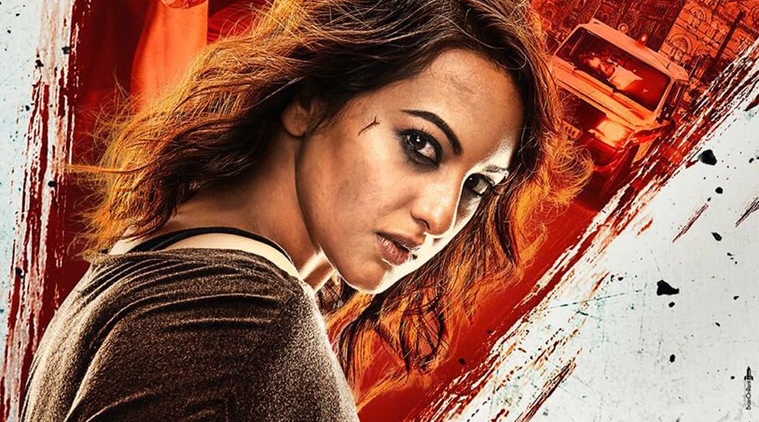Akira could have done with a shot of madness. It is not a film meant for conventional treatment that involves sympathetic mothers or helpless brothers. It needs more funk, it needs more ‘zaniness’ in the scenes for the writing to come alive.
Akira, directed by AR Murugadoss, is most fun to watch when the two female leads are doing what their characters do best.
Sonakshi Sinha is the titular Akira, and she can kick serious ass. . With shades of Uma Thurman’s Beatrix, Akira is girl wronged on a vengeance trip. A childhood incident leads her to learning martial arts, and it is this discipline that help her get out of a fix every single time in the movie. The cracking of bones, whining of pain, and shattering of skulls is accompanied by a badass attitude that is hard to ignore and easy to love.
In delightful contrast is Konkana Sensharma’s Rabiya, a female cop directly referenced from Fargo’s Marge Gunderson. She’s pregnant, in no hurry, and razor sharp. She’s a bulldog with the scent of blood in her nose, and she will get to the culprit. Every single time. Murder is just one of those things that need to be solved in her life, much like carefully stepping on stones on a broken path in consideration of her pregnancy.
Akira’s physical savagery and Rabiya’s intellectual doggedness apart, the plot is a bit of a rag tag sequence of events. A missing bundle of notes and cops gone wrong intersect with a college theft, and Akira is caught squarely in the middle of both. She escapes a police encounter, is falsely admitted to a mental asylum and given shock therapy and injections to numb her senses. She escapes every single time. In the end, she agrees to be caught for the ‘larger good’, a hare-brained piece of plotting that almost destroys all things sensible in the film till then.
All of this is driven primarily by Anurag Kashayp’s corrupt cop, a man with fewer morals than the stars on his epaullete. It’s a campy, wicked performance.
Akira could have done with a shot of madness. It is not a film meant for conventional treatment that involves sympathetic mothers or helpless brothers. It needs more funk, it needs more ‘zaniness’ in the scenes for the writing to come alive. Like the scene where Rabiya is investigating the house of the murdered escort girl. The scene opens with a close-up of her forceps carefully going through the desk in a house. Methodically picking up and looking at items, Rabiya is revealed muttering a running commentary to herself about what could have happened. The camera pulls back to reveal more of the house, and suddenly there’s two dangling feet that edge into the scene from the top left. In start contrast to how most films show a hanging corpse with cops starting directly at it, Rabiya is least interested in it. For her detective mind, the corpse is a red herring, and the search has to start somewhere else.
I think that is symbolic of the film. It is hunting for entertainment in the wrong places, and doesn’t quite get there in the end.
Hindi, Action, Color


